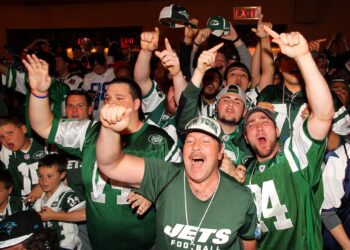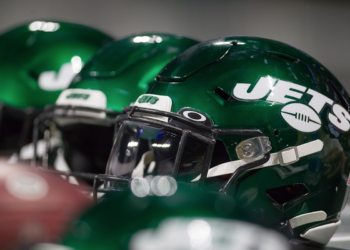NY Jets PSL Report

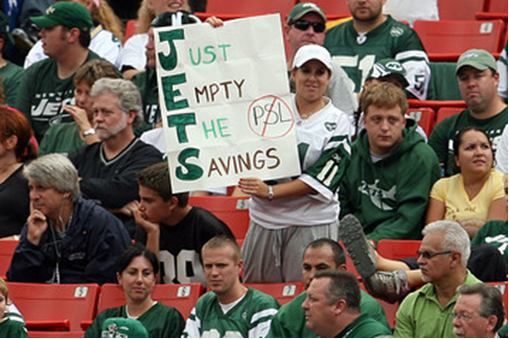 By Brian Clark
By Brian Clark
Two days ago I received my letter from the New York Jets, asking if I wanted to purchase season tickets for the 2009-2010 season. When I signed up and joined the waiting list 6 years ago, I figured that my number of 4,124 would never get called. 6 years later, and after a proposed West Side Stadium and no championships seasons during that time, I was asked if I wanted to purchase tickets much sooner than expected. Although it would be simple to purchase tickets for this year, there looms a grey cloud of Personal Seat Licenses (PSL’s) hanging over the head of all Jets fans for the 2010 season. Although I am a dedicated Jets fan, who blogs, writes articles, and goes on road trips to watch the team, I made the decision not get season tickets this year because of the high cost of PSL’s in 2010 and that the Jets have out priced me as a fan. The Jets claim that PSL’s are needed to help pay for the cost of their new stadium, but will it disenfranchise its fan base and creating a destructive attitude among its fans? The question remains, is the PSL plan that the New York Jets provided a good idea for the long term viability of its franchise and its fan base?
When New York was planning on hosting the 2012 Olympics, the heart of the plan was a West Side Stadium, built in midtown Manhattan on top of railroad tracks owned by the MTA. If passed, that new multi-purpose facility would be home for the New York Jets. After many arguments between the Jets, City and State Governments, and the MTA, in June of 2005 the plan fell through, leaving the city without a stadium for the Olympics and the Jets without a new home. After a few months however, in September 2005, the Giants and Jets reached an agreement to build a new stadium together, the first become the first NFL venue to be owned and operated by two teams. Initial estimates figured that the stadium would be near 800 million dollars, of which none would be paid for by New Jersey’s taxpayers. There were even plans to possibly build a retractable roof to support major events such as the Super Bowl and NCAA Tournament. Although the initial estimate was 800 million, by the time that the plans were set and construction began, the cost jumped to 1.7 billion, and the retractable roof, which would have pushed the price to over 2 billion, seemed like a faraway and unreasonable dream. With the high cost of the new stadium, owner Woody Johnson had to rely on a new trend in sports, the PSL to help cover the costs of the new stadium.
Although the Jets and the Giants were both among the richest franchises in the NFL, being worth $1.178 billion and $1.170 billion respectively, they still needed to rely on the fans to pay for the new stadium. Going into the financing process, the two teams needed to decide how to pay for the stadium. A breakdown of how the stadium would be paid for is listed below:
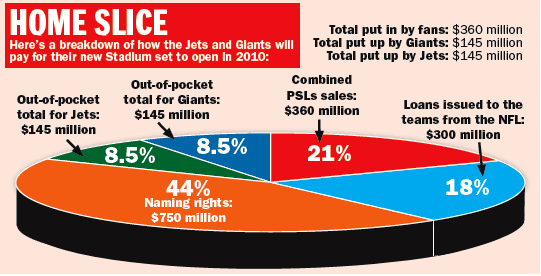
Source: New York Daily News 11/2/08
In addition to the increased seating available in the new stadium, each team will also make $50 million per year from luxury boxes compared to $5 million they each brought in at Giants Stadium. In addition, “the Giants and Jets are now owners instead of tenants of a stadium, with its high-end restaurants and lucrative sponsorship deals, that will serve as an ATM spitting out millions rather than 10s and 20s” (Daily News). In order for the stadium to be constructed, both teams knew they needed to utilize the PSL’s to cover the costs.
PSL’s first came into use in 1995 by the St. Louis Rams in an attempt to counteract the cost for the Rams to move from Los Angeles to St. Louis. The license, a one-time fee ranging from $250 to $4,500, must be purchased before buying a season ticket and gives the buyer the right to keep the seat for life. Although there were only 46,000 seats available, the Rams had requests from 72,000 interested fans (Press-Telegram). The main purpose of these PSL’s was to help counteract losses in revenue from the city of Anaheim, and not for a new stadium or to go into an owner’s pocket. Since 1995, PSL’s have been used by 27 organizations in the 4 major sports programs and NASCAR in the United States, and by multiple organizations in soccer, rugby, and tennis worldwide (Wikipedia). It was only six years ago that great open-air stadiums built in New England and Philadelphia that cost a little over $300 million each, and these projects were heavily funded through the use of PSL’s (Daily News).
In August of 2008, Woody Johnson made the first official announcement stating that the Jets were going to charge its season ticket holders to help cover the costs of the new stadium. The Jets decided that they would have a special auction to sell the best seats in the stadium through a silent auction in October, and then will sell what is left of the 2,000 PSL’s remaining through an online auction through the website StubHub.com. The PSL’s for the remainder of the stadium would be offered to the rest of the current season ticket holders in order of seniority and current seat location. The layout of the stadium’s PSL plans and chart is listed below:

Click here for detailed pricing by section.
Source: New York Jets
The cost of the PSL’s range from $4,000 to a proposed average of $25,000 for the best seats in the house. In addition to the cost of the PSL’s the Jets would charge between $95 and $700 a game. Fans would be able to pay for the PSL’s either in one lump sum or in payment plans of 5 or 15 years. In one small victory for the fans, the entire upper ring of the new stadium is exempt from PSL seats. Despite the poorer seat than the lower level, the lack of the PSL quickly made the upper level seats among the most desired by the current season ticket holders.
During the auction hosted by Woody Johnson, the Jets sold the best two seats in the stadium, first row behind the Jets sideline on the 50-yard-line to a mortgage broker for a record $200,000 a seat. David Findel paid the $400,000 for two tickets stating “It’s a function of wanting the best, both as a lifelong fan and as a business investment” (New York Post). Despite the exorbitant cost of those seats, the auction did not go as successfully for the Jets as anticipated. Although the Jets put the best 2,000 seats in the stadium up for auction, only 620 PSL’s were purchased, averaging $26,000 per seat. The Jets raised over $16 million dollars that week alone towards the cost needed for the new stadium. Considering that the rest of the lower section in the middle of the field had a flat rate of $25,000 per seat for those PSL’s after the auction, the Jets must have anticipated a higher demand for the premium seats. The poor results from this auction was the first sign of economic impact on the fan base, as it became obvious that despite the demand to sit in those premium seats, that they were out of the price range of the fans.
The Jets are not the only team to be dealing with the negative effects of the economy on sports franchises, especially on those teams in New York where fans have been affected by the financial services sector more than in other areas. The Yankees and Mets combined have only sold out one game up to this point in the year despite opening new stadiums. Their premium seats behind the dugout and home plate are not selling and have greatly impacted the atmosphere and home field advantage of those stadiums. Many of the diehard Yankees and Mets fans claim that they cannot go to as many games as they used to, which takes away from the game day experience and energetic feel to these great stadiums. Although the Jets new stadium has not been completed, the same fear needs to be in the minds of the heads of the Jets organization. Even if the Jets were able to sell out every game, which seems in doubt at this point, what type of fan would be in the seats? Would it be the type of fan that would encourage a positive and energetic game day experience, or just one who could afford to sit there? One common complaint of the diehard fan is that the lower areas of the stadium, besides being out of their price range, are filled with people who are not “true fans” and are just filled by corporate sponsors and used as giveaways for business deals. This angst of the diehard fans does not get directed at those fans, however, but instead at the organization for creating an unbalanced situation, with the owner placing his own financial desires ahead of the fans. It is negative sentiment like this which the Jets must find ways to overcome to keep their fan base in positive spirits.
The Jets plan to utilize PSL’s relates directly to the business of sports since it greatly impacts the mentality of its fans, the game day experience for the fans and for the players, and potentially could affect television exposure of the team. Considering that Jets fans already pay among the highest ticket prices in the NFL, it is even a greater stretch to then ask them to support building a new stadium especially with the economy being in a great recession. In addition to the recession, fans find it hard to believe that billionaire owner Woody Johnson wouldn’t be able to pick up more of the costs himself, instead of leaving it on the fans. Although it would be unrealistic to expect an owner to assist the financing of a stadium, especially one which the Jets will be sharing, the perception created only adds to the problems. The game day experience will greatly impact the fans as well. Since the PSL’s will be a necessary cost for season ticket holders, many of them will try to sell tickets above the price of face value, just so they would be able to cover the cost of PSL in addition to the face value of the ticket. Considering the fact that people are struggling to cover the cost of tickets alone, adding more money to the face value of the ticket will further limit the people who are able to purchase tickets. The high price of the tickets will also greatly impact game day merchandise sales. Since people need to pay additional money just to enter the stadium, it leaves less money to purchase jerseys, licensed equipment, and food and drinks inside the stadium.
Another issue for the Jets is that those fans who had been season ticket holders since the Jets became a franchise in the 1960’s must move to the upper ring if they wish to not pay for PSL’s. Since the seating in the new stadium will be based on seniority, many of the longtime diehard fans from the old stadium will be moved further from the field, which will greatly impact the game day experience. Even the most recognizable Jets fan, Fireman Ed Anzalone, has mentioned that he will be forced to move to the upper ring to afford to go to games in the new stadium. If that is not a clear indication of the impact on the longtime fans, there is little more than can be said to prove that point. Finally, considering the current rules that the NFL has in place in regard to television broadcasting, the Jets could have many games “blacked out” if there is not a sellout. The NFL states that if the stadium is not sold out for a game, the home team’s market will be subject to local blackout. Therefore no fans in the New York tri-state area will be able to watch the Jets from the comfort of home or the local sports bar. If this should happen, it will put the Jets organization in the worst situation they could create; not only is the stadium not filled for a great game day experience, but the fans who could not afford to go to the game themselves are now unable to see the game either. This catastrophic result could destroy a fan base and the organization would be placed in a difficult financial and public image situation.
Although the use of PSL’s was a necessary evil, I believe the financing plan put forth by the Jets, and by association the Giants, was not the best plan to keep the fans engaged and happy. Being a Jet fan in itself is a tough challenge. Considering that every other major sports franchise in New York has won at least one championship since the Jets have won their only Super Bowl in 1969, there is already very little for Jets fans to hang their hats on. From the brutal loss in 1986 to the Browns, to the loss in the AFC Championship game to the Broncos in 1998, to Doug Brien missing two late field goals in Pittsburgh in 2005, the Jets fan has been through heartbreak in recent years. Despite all this pain, Jets fans still come out every Sunday to support their team. That is, as long as they can afford it. As of June 30th, the Jets have gone through their waiting list and offered the first 8,000 fans the possibility to buy season tickets starting in 2010, as long as they are willing to pay the high cost of PSL’s (Jetnation). Considering that the Jets have only 13,000 people on their waiting list for season tickets, it appears at this point they might have a hard time filling those high-priced seats.
Instead of financing the new stadium through the heavy cost of PSL’s, there should have been a more balanced approach to the payment of the new stadium. To begin, the Jets and Giants should have set a much lower cap on the total cost of the stadium. Considering that the final cost of the stadium is more than double the initial estimate only shows the unpreparedness at the start of this project. Since the Jets and Giants fans are taking on $360 million of the cost of the 1.7 billion dollar stadium, even a decrease to 1.5 billion dollar stadium would greatly affect the price of the PSL, and therefore have less of an impact on the psyche of the fan and the size of their wallets. A large portion of the costs of the new stadium is the creation of luxury boxes in the stadium, which to the owners is a high revenue area for the stadium. Considering that the regular fan will never be able to see a game in these luxury boxes, the owners should have covered additional costs to cover the construction of these areas, considering that they will be getting the direct revenue from their use. Another area which seems to be an unnecessary addition to the new stadium is the “Coaches Club” area, located beneath the seats along the 50-yard-line. This exclusive club is available only for those season ticket holders who paid for premium seats between the 40-yard-lines. These fans have access to full buffets starting 2 hours prior to game time, and have the ability to stand on the field during the game, 5 yards behind the players on the sideline. Although this is a great perk for those who can afford it, it is purchases such as this that the common fan sees as unnecessary. It is additional expenses such as this which make PSL’s an even harder sell for the common fan in other sections, especially considering that they will never get to see the inside of this exclusive club. Since the Jets understood that the PSL’s were going to be a difficult issue to overcome, they should have made a more public effort to reach their “common” fans, pitching them the perks of the PSL’s to them, instead of focusing on their personal financial situation by focusing on the sections and fans that would be sitting in the most expensive seats.
In my opinion, I feel that PSL’s have a much greater impact in the short-term psyche of the fan, but will not hurt the organization over the length of the stadium. Considering the economy has had the worst downtown in nearly a century, the Jets were unfortunate with their timing. Despite that fact, they might be put in a difficult situation if they are unable to sell all of their seats which have a PSL attached. The Jets have promoted the PSL as the way for the fans to secure their seats for “generations in the future”. The problem with that logic is that the PSL only truly lasts through the life of the stadium. The current contract for the PSL states that the PSL reserves the right to purchase that seat in the new stadium, but it does not carry over to other stadiums. If in 40 years, the Jets and Giants decide to build a new stadium, it is likely that the PSL’s may have not even been passed onto one generation, not to mention many generations.
The Jets need to find new ways to reach out to their fans and let their fans feel that they care about their fans. The willingness for the organization to get a new coach in the organization, Rex Ryan, and to sign many new players to the team to include Bart Scott, Jim Leonhard, and first round draft pick Mark Sanchez were all great additions to build excitement, but they need to take this momentum and use to get fans to fork over the money for additional PSL’s. With the anticipated improvement of the economy in the next year, the Jets need to make the PSL a highly desired item, instead the worst combination of 3 letters to the Jets fan. In my opinion, if the Jets can find a way to bridge the gap between the common fan and the PSL, then the future of the team in the new stadium will be bright. If they are unable to do that, there will be nothing but uncertainty, empty seats, and a continued pessimistic attitude among the fan base.
Will the move lead to a greater home field advantage with the odds and will more experts take the home teams with their predictions.
Works Cited
1. Associated Press. “Ram Fans in St. Louis Must Pay a ‘Personal Seat License’” 01191995. 06302009 http://nl.newsbank.com/nlsearch/we/Archives?p_product=LB&p_theme=lb&p_action=search&p_maxdocs=200&p_topdoc=1&p_text_direct-0=0EAE9006F30EB2AC&p_field_direct-0=document_id&p_perpage=10&p_sort=YMD_date:D&s_trackval=GooglePM
2. Cannizzaro,Mark. ““Fed-Up Fans Tix-ed Off By PSL Fees” .” New York Post 12302008. . 06302009 <http://www.nypost.com/seven/12302008/sports/jets/fed_up_fans_tix_ed_off_by_psl_fees_141464.htm>
3. Keating, Peter. “The BIZ: The PSL “Problem”.” ESPN 05082008. . 06302009 <http://sports.espn.go.com/espnmag/story?id=3520135>.
4. “Lots of Season Tickets Available” https://forums.jetnation.com/
5. Myers, Gary. ““How PSLs have turned Jets’ & Giants’ field of dreams into a nightmare” .” New York Daily News 11042008. . 06302009 <http://www.nydailynews.com/sports/football/giants/2008/11/01/2008-11-01_how_psls_have_turned_jets__giants_field_.html?page=1
6. Olshan, Jeremy. ““Jets’ High Flier – 400G Seat Man Revealed”.” New York Post 10282008. . 06302009 <http://www.nypost.com/seven/10282008/news/regionalnews/jets_high_flier_135650.htm>.
7. “Personal Seat License”. Wikipedia. 06302009 http://en.wikipedia.org/wiki/Personal_seat_license
8. Waszak, Dennis Jr. ““Jets Earn Over $16 Million in Online PSL Auction” .” New York Daily News 10282008. . 06302009 <http://abcnews.go.com/Sports/wireStory?id=6129785>.
Videos
Covering Jets top 30 Visits, Aaron Rodgers Slander and some of "our guys"


